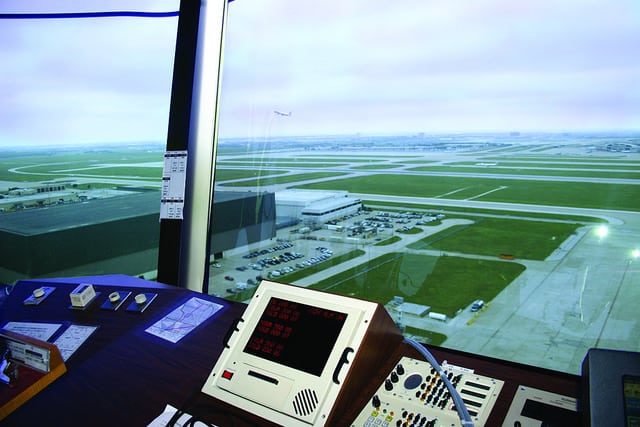
Dallas/Fort Worth (DFW) air traffic control tower. Photo: National Air Traffic Controllers Association (NATCA).
DFS Deutsche Flugsicherung and GLVI Gesellschaft für Luftverkehrsinformatik, have developed a prototype system that can help air traffic controllers monitor flight paths, DFS said. The system was tested in extensive simulations, DFS said, and DFS and GLVI plan to continue their partnership to explore further functionalities. The system is part of the Single European Sky ATM Research Program (SESAR).
The simulations allowed pilots to control up to 20% more traffic in the airspace, DFS said, using the Controller Assistance Tools (CATO). They were also able to maintain a consistently high safety level while doing so. With the assistance tools, air traffic controls have help identifying and resolving potential conflicts, according to DFS. The controller receives immediate information about which airports are conflict-free and can be released for flight. Information is recalculated in short cycles, and software algorithms, developed by GLVI, allow for real-time conflict detecting and solution.
“The performance of the CATO algorithms is a technical all-purpose feature. Extensive simulations, some of which have extremely high traffic loads, have shown that the productivity of the controllers and the capacity in the airspace can be significantly increased,” said Robert Schickling, managing director of DFS. “In the next step, we are aiming at the gradual implementation of the functions in our future iCAS air navigation system together with our European cooperation partners of the iTEC Initiative, who are working on similar solutions.”